The world's largest camera opens a new era of exploration with the most detailed images of the cosmos.

The Vera C. Rubin Observatory , located atop Pachón Hill in northern Chile, has released its first batch of full-color images. The new snapshots and scientific data published Monday capture the most detailed time-lapse view of the cosmos. A true movie that will bring the universe to life, revealing a treasure trove of discoveries: asteroids and comets, pulsating stars, and supernova explosions not yet known to humanity.
The photographs mark the beginning of the observatory's scientific operations after a decade of construction, developed under the supervision of AURA , a consortium of 49 U.S. universities and international affiliates. The dry climate of the area offers a perfect setting for skygazing, and for a time, it will be the most powerful instrument in the world. Rubin is part of the already extensive network of scientific observatories in the Coquimbo region, as is the case with Gemini.
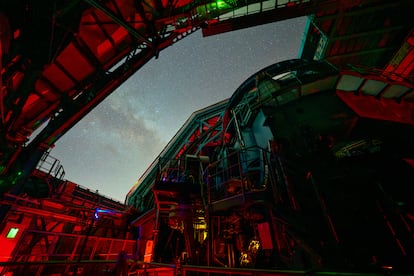
The Rubin Observatory features the Large Synoptic Survey Telescope (LSST), a gigantic eight-meter-long camera with a resolution of 3,200 megapixels, allowing each image it captures to have an area similar to the diameter of 40 full moons. Yusra AlSayyad, Rubin's deputy associate director for data management, says the project makes it possible to observe the constant dynamism of the sky: "Rubin will allow us to capture that movement with technologies that were unimaginable 20 years ago. It will take an image every 30 seconds," she said during a press conference organized by the National Science Foundation and the U.S. Department of Energy's Office of Science.
The enormous field of view—the result of the collaborative work of hundreds of scientists from the United States and France—will allow experts to zoom out to observe galaxies and zoom in to track dense backgrounds. The observatory's pace will be too rapid for human intervention, so artificial intelligence (AI) will play a major role in data collection. AI will support the image processing chain, which is key to sifting through petabytes of data and indicating movements in real time.
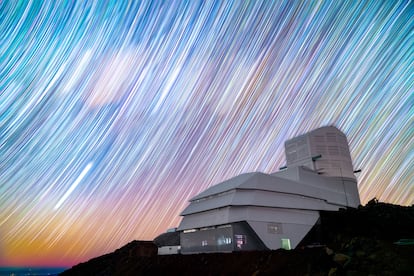
The system offers two delivery modes: immediate alerts (up to 10 million events per night) that will be available to the public in real time, and annual data releases that will be cumulative and calibrated. In this first set of images and videos, Rubin has captured the following objects:
- Trifid and Lagoon Nebulae : These are two star-forming regions located in the constellation of Sagittarius, about 5,000 light-years from Earth. This image combines 678 separate images taken by Rubin in just over seven hours of observing. They clearly reveal details that would otherwise be faint or invisible, such as clouds of gas and dust.

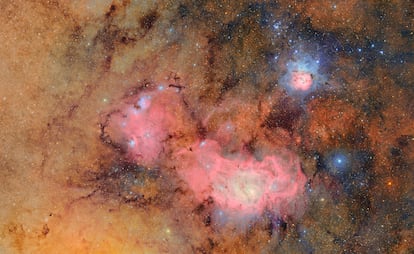
- Virgo Cluster : The Virgo galaxy cluster contains over 2,000 galaxies 59 million light-years away, in the direction of the constellation of Virgo. A section of the full view shows two prominent spiral galaxies (lower right), three merging galaxies (upper right), several distant galaxy groups, and many Milky Way stars.
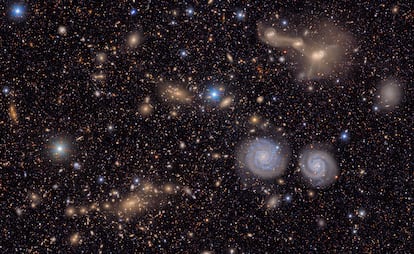
- The cosmic treasure chest: compiled from more than 1,100 images captured by the Observatory. Those 10 million galaxies are about 0.05% of the approximately 20 billion galaxies Rubin will image during its 10-year Legacy Survey of Space and Time.
The observatory, which emerged as an idea in the early 2000s, is named after pioneering American astronomer Vera C. Rubin, who found conclusive evidence of vast amounts of invisible material known as dark matter. Understanding the nature of dark matter, dark energy, and other large-scale cosmic mysteries is a central goal of the mission.
In its first year alone, it will accumulate more data than all other optical observatories combined. This valuable dataset will enable researchers to make numerous discoveries and will represent an unparalleled resource for scientific research for decades to come.
Do you want to add another user to your subscription?
If you continue reading on this device, it will not be possible to read it on the other device.
ArrowIf you want to share your account, upgrade to Premium, so you can add another user. Each user will log in with their own email address, allowing you to personalize your experience with EL PAÍS.
Do you have a business subscription? Click here to purchase more accounts.
If you don't know who's using your account, we recommend changing your password here.
If you decide to continue sharing your account, this message will be displayed indefinitely on your device and the device of the other person using your account, affecting your reading experience. You can view the terms and conditions of the digital subscription here.
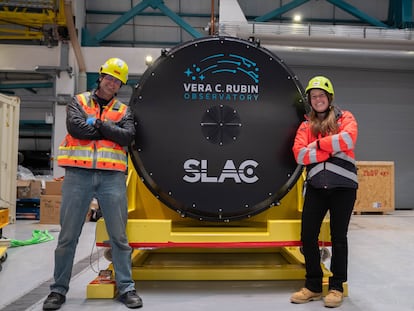
EL PAÍS


%3Aformat(jpg)%3Aquality(99)%3Awatermark(f.elconfidencial.com%2Ffile%2Fa73%2Ff85%2Fd17%2Fa73f85d17f0b2300eddff0d114d4ab10.png%2C0%2C275%2C1)%2Ff.elconfidencial.com%2Foriginal%2Fb9d%2F672%2F70f%2Fb9d67270f86a776acdee3811ea2424cd.jpg&w=1280&q=100)



%3Aformat(jpg)%3Aquality(99)%3Awatermark(f.elconfidencial.com%2Ffile%2Fbae%2Feea%2Ffde%2Fbaeeeafde1b3229287b0c008f7602058.png%2C0%2C275%2C1)%2Ff.elconfidencial.com%2Foriginal%2Fe06%2F68f%2Fcd0%2Fe0668fcd078966921fa39e4ee99b44b8.jpg&w=1280&q=100)